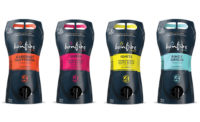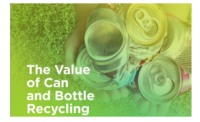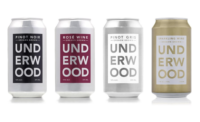Can the wine bottle be replaced?

Beautiful, authentic, and perfectly proportioned for sharing with another person, the glass wine bottle has an iconic place among wine lovers.
Not only does it transport the wine from the barrel to your home, it is a symbol of romance and the good life. It comes in different shapes and colors according to the region in which the wine is produced. And who hasn’t bought a wine based on the beauty of the bottle?
But the times are a-changin’.
Wine is now being packaged in small, single-serving bottles, boxes, PET bottles, Tetra Paks and cans, and these alternatives are finding an audience. According to a Gallo survey (gallowinetrends.com/home) , nearly half of younger wine drinkers regularly purchase single-serving bottles and 58% of all wine drinkers have purchased boxed wine.
The demand for convenience is driving this shift away from the 750 ML bottle.
Single-serving bottles are ideal for enjoying a glass without opening a large bottle that may spoil before it’s finished. Boxed wine has been around for some time now, but more producers are offering this alternative for higher quality wine. The collapsible bladder and air-tight valve prevent exposure to light and oxygen allowing the wine to stay fresh for weeks after being opened.
Wine In standard-sized PET bottles is beginning to appear on store shelves. Glass is heavy and will break making glass bottles expensive to transport while leaving a large carbon footprint. Plastic bottles are a potential solution as their weight is approximately 15% of a glass bottle, and they take up less space on the store shelf as well. The problem is PET is permeable to oxygen; wine in plastic has a shorter shelf life. And will consumers accept wine in plastic?
The Tetra Pak is common as a juice container and does a better job than plastic at protecting the wine. They are certainly convenient to stack on shelves or throw in a backpack and have the same weight advantages as plastic. Some consumers in Europe, Scandinavia, and Argentina are on board but the idea has been slower to catch on here in the U.S.
And what about wine in cans? Cans are portable and convenient and allow you to blend in with the beer drinkers while sipping a Chardonnay on the sly. But I know lots of wine lovers for whom drinking from a can is just too déclassé. (That wouldn’t be me of course.)
And there are even more changes on the horizon. Wine in stacked, pre-poured cups have made an appearance as have plastic bladders wrapped in corrugated cardboard.
Will any or all of these alternatives replace the wine bottle? Despite the fact that wine has become an everyday commodity, wine marketing still hangs on to the romance of wine of which the traditional bottle is very much a part. Cost pressures and convenience will inexorably drive consumers away from the bottle, but it is hard to replace an icon.
For more on the culture of food and wine visit Edible Arts. And for all your wine event needs The Sommelier Company can deliver.
Dwight Furrow is Professor of Philosophy at San Diego Mesa College specializing in the aesthetics of food and wine.
Looking for a reprint of this article?
From high-res PDFs to custom plaques, order your copy today!






